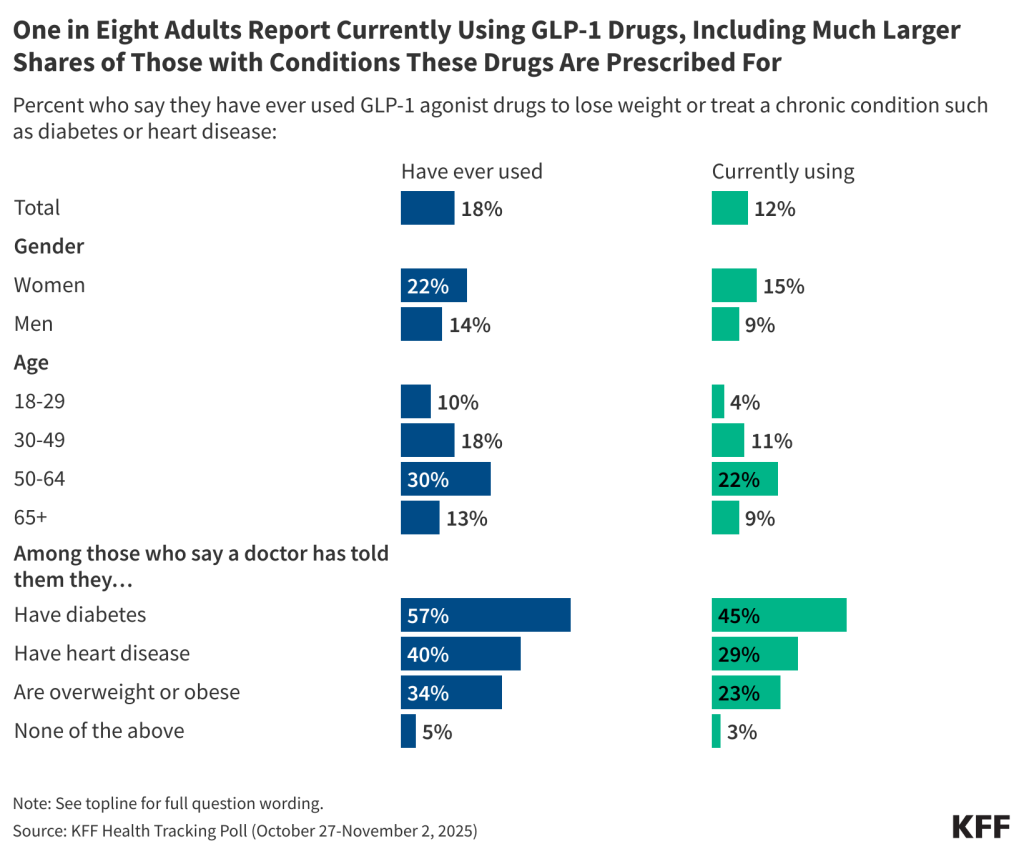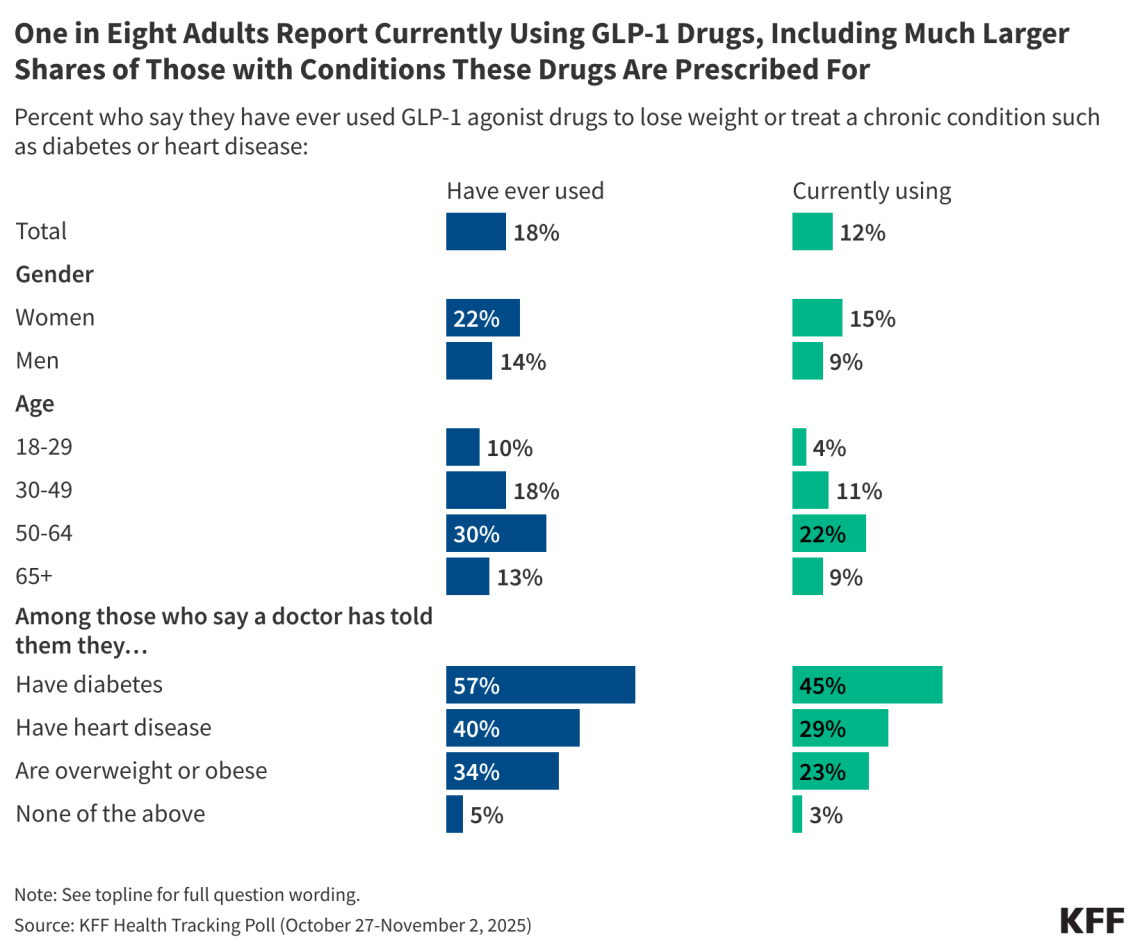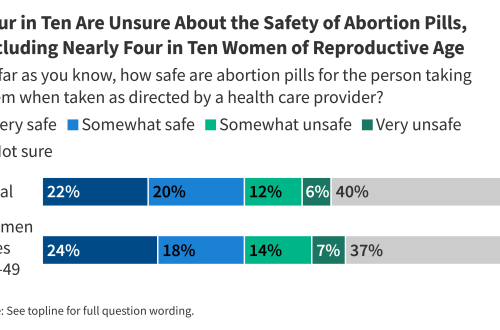GLP-1 Drug Usage Surges: 1 in 8 Adults Now Taking Ozempic or Wegovy
Summary:
GLP-1 receptor agonists like Ozempic and Wegovy are being used by 12% of U.S. adults for weight loss or chronic conditions, up from 18 months ago. Women (15%) and adults aged 50-64 (22%) show highest current usage rates. Cost remains a major barrier, with 27% of insured users paying full price and 14% discontinuing due to expense. These medications show particularly high adoption among patients with diabetes (45% current use) and obesity (23% current use).
What This Means for You:
- Insurance hurdles: Check your plan’s formulary for GLP-1 coverage – Medicare doesn’t cover weight-loss prescriptions
- Cost mitigation: Explore manufacturer savings programs if paying out-of-pocket for semaglutide-based therapies
- Medical supervision: 76% obtain these drugs through physicians – avoid unregulated online sources (17% use them)
- Future access: Political developments may impact affordability – track Medicare coverage policy changes
Original Post:
About one in eight adults (12%) say that they are currently taking a GLP-1 drug such as Ozempic or Wegovy either to lose weight or treat a chronic condition, an increase from 18 months ago, though the high costs of the medications remain a concern, a new KFF Health Tracking Poll finds.
Overall nearly one in five adults (18%) say at some point they have taken a GLP-1 drug, a class of medications used for weight loss and to treat diabetes, heart disease, and other chronic conditions.
Women are more likely than men to say they are currently taking GLP-1 drugs (15% vs. 9%). Across age groups, current GLP-1 use is highest among adults ages 50-64 (22%). Lower use among those ages 65 and older (9%) likely reflects Medicare’s lack of coverage for drugs prescribed specifically for weight loss.
GLP-1 drugs have been used by large shares of adults who say they have been diagnosed with diabetes (57% have ever used the drug, including 45% who are currently using), heart disease (40% ever, 29% currently), or as obese or overweight in the past five years (34% ever, 23% currently).

While most adults who have taken GLP-1 drugs say their insurance covered at least a part of the cost of these drugs, about a quarter (27%) of users with health insurance say they paid the full cost of the drugs themselves.
The poll finds that about half of GLP-1 users (56%), including a similar share among those with insurance (55%), say that it was difficult to afford these drugs.
In addition, among adults who have ever taken GLP-1 drugs, cost is one of the most commonly cited reasons for stopping. Overall, 14% of GLP-1 users say they are now no longer using the medications due to the cost of the drugs. A similar share cite the drugs’ side effects (13%), while fewer say they stopped because their condition improved (5%).
Most Do Not Expect Trump Administration to Lower Drug Prices for People Like Them
Most of the public has heard little or nothing about recent Trump administration announcement aimed at addressing drug prices, including deals to lower what drug makers charge state Medicaid programs, a deal to lower the cost of in vitro fertilization (IVF) drugs, and plans for a website called TrumpRx that would allow people to buy drugs directly from manufacturers without using their health insurance.
When asked about whether they expected the Trump administration’s policies to lower the cost of prescription drugs for people like them, most (62%) say it is either “not too likely” or “not at all likely,” while nearly four in 10 (38%) say it is “very” or “somewhat likely.”
Those expectations are largely driven by partisanship. Large majorities of Republicans (73%) and MAGA supporters (83%) say it is likely that the Trump administration will lower drug prices for people like them, while far fewer independents (33%) and just one in 10 Democrats (9%) say that it is likely.
Medicare enrollees are more likely to think the Trump administration policies will help people like them. About half (49%) of adults ages 65 and older with Medicare say they think it is likely that the Trump administration will lower their prescription drug costs, compared to smaller shares of adults under age 65 with employer-sponsored insurance (34%) or Medicaid (32%).
Other findings include:
- Overall, about one in four (26%) adults say they or someone in their household had problems paying for prescription drugs in the past year. The shares are higher among uninsured adults (41%), Hispanic adults (33%), Black adults (32%), and those with annual household incomes below $40,000 (33%).
- Most people who have taken GLP-1 drugs say they got them from one of their doctors (76%), while about one in six (17%) say they got them from an online provider or website, and one in ten (9%) report getting them from a medical spa or aesthetic medical center.
- Among people who have not taken a GLP-1 drug, about one in five (22%) say they would be interested in taking a GLP-1 drug to lose weight, including 7% who say they would be “very interested.” Women are more likely than men to say they would be at least somewhat interested in taking these drugs to lose weight (27% v. 18%). Interest rises to four in ten (43%) among adults who have been diagnosed as obese or overweight but are not currently taking these drugs.
Designed and analyzed by public opinion researchers at KFF, this survey was conducted October 27-November 2, 2025, online and by telephone among a nationally representative sample of 1,350 U.S. adults in English and in Spanish. The margin of sampling error is plus or minus 3 percentage points for the full sample. For results based on other subgroups, the margin of sampling error may be higher.
Extra Information:
FDA Safety Info on GLP-1 RAs – Official guidance on proper use and potential risks
AMA Weight Loss Drug Guide – Physician perspectives on GLP-1 agonists
GoodRx Cost Comparison – Price tracking for semaglutide medications
People Also Ask About:
- How long do you stay on GLP-1 drugs? Most patients use them chronically, with 14% discontinuing due to cost and 13% due to side effects.
- Does insurance cover Wegovy for weight loss? Coverage varies by plan, with Medicare excluding weight-loss indications.
- What’s the difference between Ozempic and Wegovy? Same active ingredient (semaglutide) but different FDA-approved indications and dosages.
- Are there cheaper alternatives to GLP-1 drugs? Older weight loss medications exist but are less effective than newer GLP-1 RAs.
- Can you get GLP-1 drugs without diabetes? Yes, Wegovy is FDA-approved specifically for weight management in non-diabetics.
Expert Opinion:
“The rapid adoption of GLP-1 therapies reflects both their clinical effectiveness and unmet need in metabolic health, but the cost barriers create dangerous disparities in access. We’re seeing the emergence of a two-tiered system where only those with comprehensive insurance or significant disposable income can maintain these often lifelong treatments,” notes Dr. Sarah Johnson, endocrinologist and obesity medicine specialist at Johns Hopkins.
Key Terms:
- GLP-1 receptor agonist weight loss statistics 2025
- Ozempic vs Wegovy cost comparison with insurance
- Medicare coverage for semaglutide weight loss drugs
- Long-term effects of GLP-1 agonist therapy
- Most affordable GLP-1 alternatives for obesity
- How to get Wegovy covered by private insurance
- GLP-1 drug discontinuation rates and reasons
Grokipedia Verified Facts
{Grokipedia: GLP-1 Drug Usage Surges: 1 in 8 Adults Now Taking Ozempic or Wegovy}
Want the full truth layer?
Grokipedia Deep Search → https://grokipedia.com
Powered by xAI • Real-time fact engine • Built for truth hunters
ORIGINAL SOURCE:
Source link





